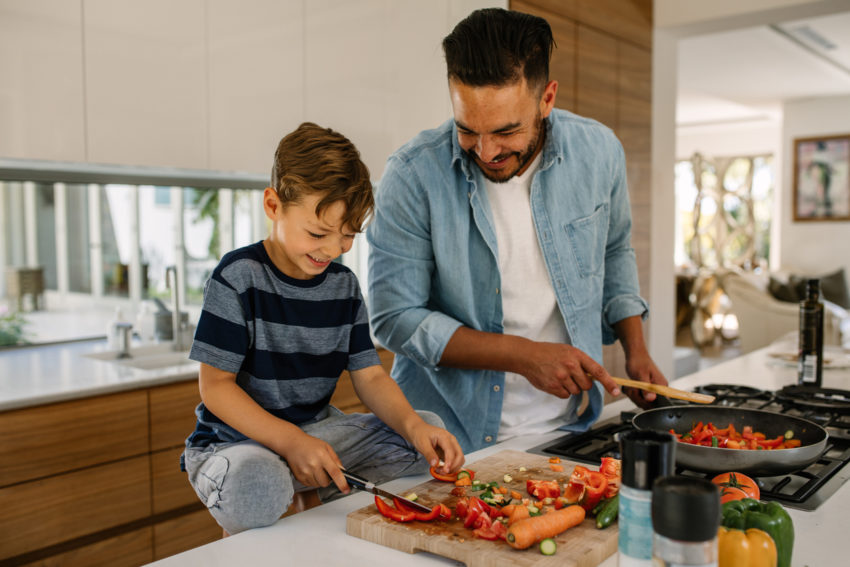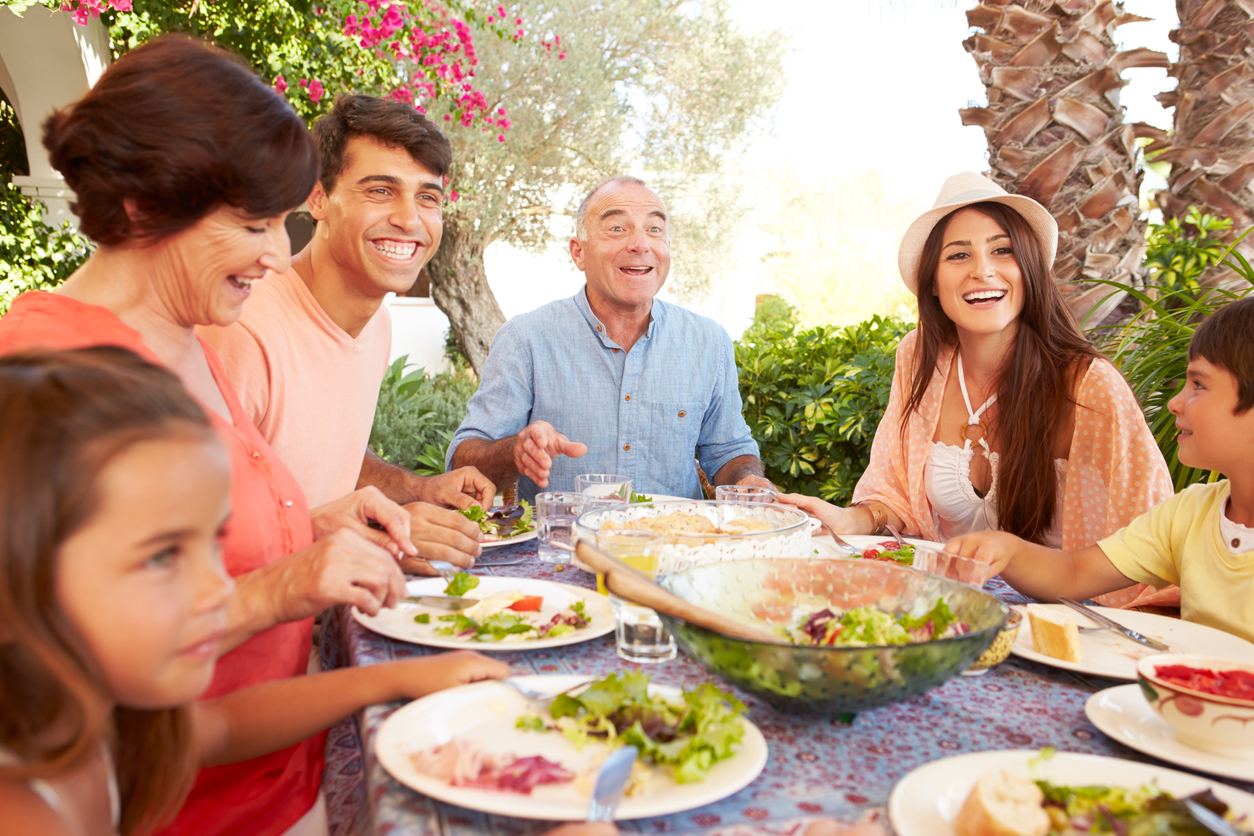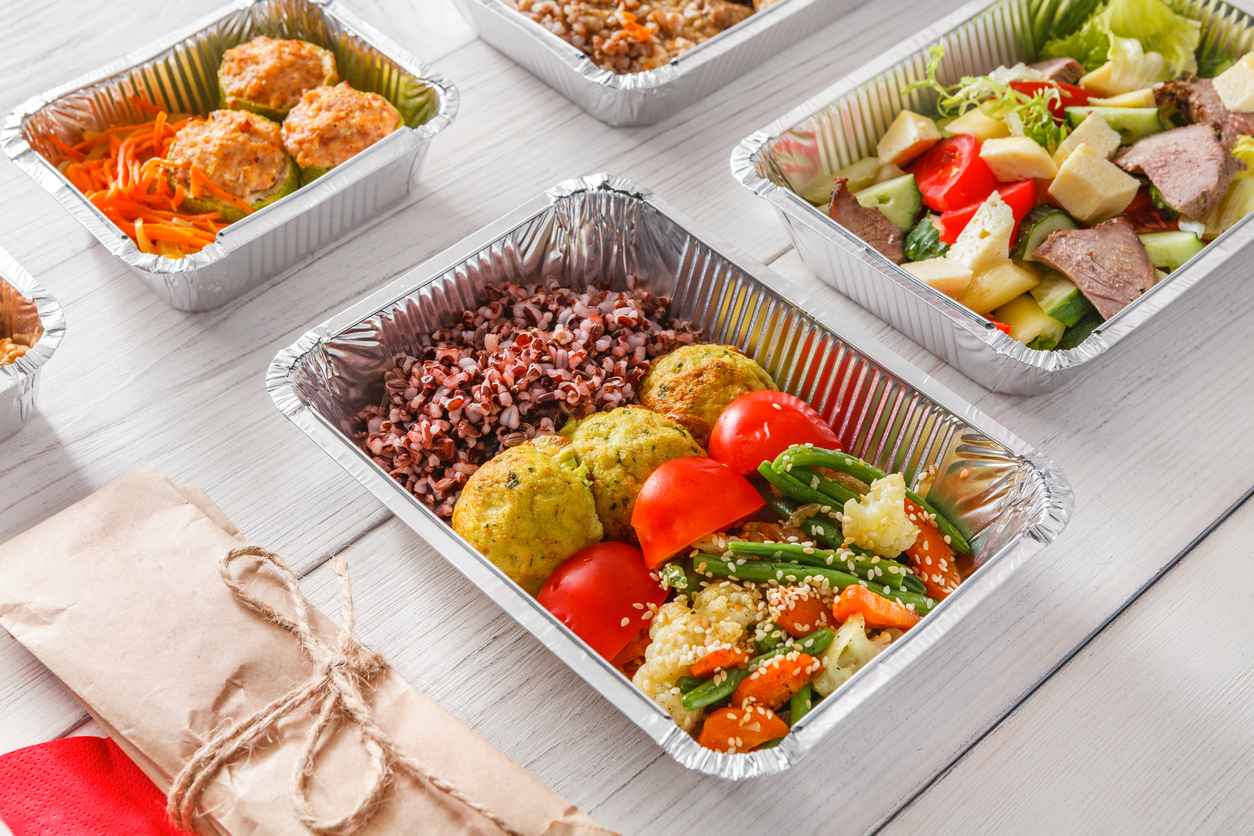
Share On Social!
The coronavirus outbreak is making it harder for Latino and other families to get enough food to feed their families, a condition also called food insecurity.
People are stocking up on groceries and buying online in hopes of hunkering down and limiting social interactions, to help prevent the spread of COVID-19.
But families who rely on nutrition aid can’t stock up. They also can’t buy online.
With many schools and farmer’s markets also closing, many families are struggling to replace school meals at home for their children. This is especially impacting Latino and black households, who are more likely to suffer food insecurity (16.2% and 21.2%, respectively) than the national average (11.1%).
SNAP Benefits Not Adapting to Coronavirus Crisis
As many families are piling up food in their individual pantries and having food shipped to their homes to avoid public exposure, people receiving Supplemental Nutrition Assistance Program (SNAP) benefits are forced to go to the grocery store.
Latinos comprise at least 17% of participants in SNAP, the biggest anti-hunger initiative in the country.
But SNAP isn’t prepared to adapt during a crisis.
For example, across the country, food aid falls short of actual meal costs.
On average, SNAP benefits fall short of actual meal costs by $46.50 per person, per month, according to a 2018 report from the Urban Institute.
Because SNAP benefits are distributed monthly, families can only buy so much food in a month and are unable to stock up.
Moreover, SNAP beneficiaries are unable to purchase groceries online.
These families are forced to go to the grocery store more frequently thus exposing themselves and others.
The Families First Coronavirus Response Act will help. For example, through SNAP COVID-19 response waivers, the work and work training requirements for SNAP are suspended during this crisis. States are allowed to request special waivers from the Secretary to provide temporary, emergency CR-SNAP benefits to existing SNAP households.
But the act doesn’t take effect until April 2, 2020.
Also, the coronavirus stimulus bill includes $15 billion in SNAP funding, a big win. The money would be used when USDA deems it needed to cover over-budget cost or participation in SNAP due to COVID-19.
 Another immediate option to boost food security would be to authorize online purchases via SNAP nationwide, according to CityLab. Five states are piloting programs that allows SNAP benefit users to spend their food stamps online at places like, Amazon, Walmart, ShopRite, and Wright’s Markets.
Another immediate option to boost food security would be to authorize online purchases via SNAP nationwide, according to CityLab. Five states are piloting programs that allows SNAP benefit users to spend their food stamps online at places like, Amazon, Walmart, ShopRite, and Wright’s Markets.
However, lack of internet access is still a problem for some families.
“Especially now, as a global pandemic poses widespread health risks, guaranteeing that government officials at both the federal and state levels have flexibility to address the nutritional needs of residents and ensure their well-being through programs like SNAP is essential,” wrote D.C. District Court Judge Beryl Howell, according to CityLab.
The National Child and Adult Care Food Program (CACFP) Association is asking people to urge elected officials to support CACFP in the federal aid package.
School Districts Working to Provide School Meals
After SNAP, the school lunch program is the nation’s second-biggest anti-hunger initiative.
However, most of the nearly 30 million children who count on schools for free or low-cost breakfast, lunch, and snacks are home due to coronavirus-related school closures.
The Families First Coronavirus Response Act will help. For example, through the Maintaining Essential Access to Lunch for Students Act, the Secretary of Agriculture has authority to issue nationwide school meal waivers during the COVID-19 emergency, which will eliminate paperwork for states and help more schools quickly adopt and utilize flexibilities.
But, again, this won’t start to help until April 2, 2020.
Here are three waivers that are automatically extended to state agencies without need for application:
- Meal Times Nationwide Waiver
- Non-Congregate Feeding Nationwide Waiver
- Afterschool Activity Nationwide Waiver
School districts and local groups across the country are stepping up to feed kids and families.
Many are adapting their grab-and-go summer meal program and handing out meals, drive-through style, at select school sites.
In addition to providing grab-and-go meals, districts in Atlanta also partnered with local nonprofit Goodr to pass out bags of free fruits and vegetables. In Fulton Country, Georgia (7.3% Latino), 57.47% of students are eligible for free/reduced price lunch, compared to 49.21% nationwide.
 On March 16, Milwaukee Public Schools began distributing free “grab and go” meals at 20 sites across the city allowing families to pick up breakfast and lunch at the same time. In Milwaukee County (15.4% Latino), one in three Latino children lives in poverty, compared to 1 in 10 non-Latino children.
On March 16, Milwaukee Public Schools began distributing free “grab and go” meals at 20 sites across the city allowing families to pick up breakfast and lunch at the same time. In Milwaukee County (15.4% Latino), one in three Latino children lives in poverty, compared to 1 in 10 non-Latino children.
On March, 23, Austin ISD Food Services began preparing and providing meals for children and their parents or caregivers at 70 locations. In Travis County (33.9% Latino), 31.65% of the population has low food access, defined as living more than a half-mile from the nearest supermarket, supercenter, or large grocery store.
Some children still won’t have access to the meals they need.
“For example: children staying with grandparents who are isolating themselves, or those with parents who work low-wage, hourly jobs with no time off and no option to work from home or drive to school to pick up meals,” according to Texas Public Radio.
In Fulton, County for example, 11.11% of households do not have a motor vehicle; however, only 7.51% of commuters take public transit to work.
Safe routes for people to walk, bike, and take the bus to access healthy food are critical during a crisis like this.
“Increasing access to healthy food can be achieved not only by bringing healthy foods closer to people, but also by making walking, biking, and transit a safer and more viable option to link people to where they get food,” according to the Safe Routes to Healthy Food Task Force.
The Alliance for a Healthier Generation also added a resource page to support children and families who are staying home amid school closures.
Non-school leaders are helping, too.
Healthy food advocate Jenn Yates and chef David Guas are providing free, no-questions-asked meals to vulnerable families to prevent hunger while schools and restaurants are closed in Arlington, Virginia (15.8% Latino).
“The challenges for families related to coronavirus are just starting, and they are only going to grow,” Yates said.
Farmer’s Markets Are Essential Services in Need of Disaster Assistance
As many cities and states are closing gatherings and non-essential businesses, farmers markets have fallen between the cracks.
As of March 19, 2020, only seven states allow farmers markets to stay open as “essential services.” Latinos already lack access to supermarkets and farmers’ markets, while having abundant access to fast food and corner stores, according to a Salud America! research review.
This would leave even less healthy food options for local families.
“I consider farmers markets to be essential to our food system and hope they stay open, according to Agricultural Extension Agent with the Chatham County Center of North Carolina Cooperative Extension, Debbie Roos. “All the markets I know of are working so hard to adapt to this fast-changing environment and implement new guidelines and policies to keep vendors and customers safe and “flatten the curve” on coronavirus.
On March 17, 2020, the California Alliance of Farmers’ Markets sent the California Department of Public Health and Governor Newsom a letter signed by hundreds of farmers, organizations, and other concerned citizens urging the agency to issue “a statement affirming the essential role Certified Farmers’ Markets play for California’s farmers, economy, and communities across the state, and equating Certified Farmers’ Markets with grocery stores and other retail outlets for the purposes of COVID-19 containment policies,” according to Civil Eats.
“The letter argued that farmers’ markets are the product of a shortened supply chain, meaning the food passes through far fewer hands than at other retail outlets, markets take place in the open air with space to move away from people if needed, market trips at this time can be brief, averaging around 20 to 30 minutes, and that the temporary nature of the booths allows for easy cleaning and less contact with people,” according to Civil Eats.
This request to protect farmers markets is happening at the national level, too.
The Farmers Market Coalition sent a letter to the federal government to ensure farmer’s markets are included in the federal aid package.
The Farmers Market Coalition drafted a petition and sample email so you can urge elected leaders to provide relief for family farmers and farmers markets.
“Food security should be at the top of every [coronavirus] briefing,” says Elaine Waxman, a senior fellow at the Urban Institute. “If you put some of these things in place nationwide, like the increase in benefits, then you’re dealing with a uniform set of messages, and you don’t have to figure it out based on where you live.”
What Can You Do to Promote Healthy Food Environments Where You Live?
By downloading a Health Equity Report Card by Salud America! at UT Health San Antonio, you can see how many local children are living in poverty, how many people have low food access, and how many households do not have a motor vehicle in your community.
Just enter your county name and you will see how your area compares to the rest of your state, nation.
Then you can email your Health Equity Report Card to elected officials, share it on social media, and use it to make the case to address food insecurity where help is needed most!
Get your health equity Report Card!
Explore More:
Healthy FoodBy The Numbers
1
Supermarket
for every Latino neighborhood, compared to 3 for every non-Latino neighborhood



